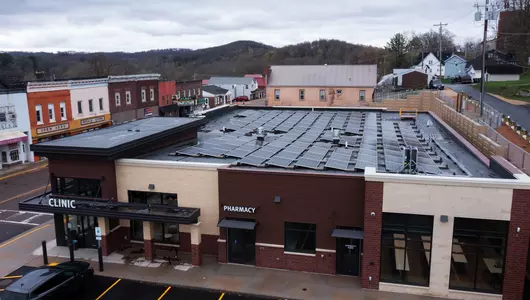
Microgrid
Microgrids offer numerous advantages, making it an attractive solution for energy needs. One of the main benefits of microgrids is the ability to enhance energy security. In the event of a power outage on the main grid, our microgrids can continue to supply power independently, providing resilience against disruptions.
Empowering energy independence
Microgrids are revolutionizing the way we think about energy distribution. They offer a more sustainable, resilient and efficient way to deliver power. As the demand for reliable and clean energy sources grows, microgrids are emerging as a critical component of modern energy systems.

Understanding microgrids
At its core, a microgrid is a localized energy system that can operate independently or in conjunction with the main power grid. It consists of interconnected loads and distributed energy resources within clearly defined electrical boundaries. This setup allows a microgrid to function by itself or to be connected to the larger grid. Microgrids are designed to seamlessly transition between grid-connected and independent modes, providing flexibility and reliability in energy supply.
Reliable, efficient clean energy
Microgrids often incorporate renewable energy sources like solar and wind power, reducing reliance on fossil fuels and lowering greenhouse gas emissions. It can also combine with the burned methane gas or biogas used to heat our buildings, which is produced by the waste at the La Crosse County landfill. This makes them an essential component of energy sustainability for our health system. By harnessing local renewable resources, microgrids contribute to cleaner air and reduced environmental impact.

A sustainable future in Onalaska
Our Onalaska campus will be a true microgrid. It will produce enough energy for the entire campus. This adds resiliency to our campus and helps reduce the cost of care, as all of the energy will be produced from renewable resources. The microgrid combines a new backup energy storage system with our existing solar panels and landfill gas-to-energy project to ensure even if the electric grid goes down, the campus will function as usual for a period of time. It will create one of the first 100 percent resilient and renewable energy healthcare campuses in the United States.

News

Employee garden offers place to unwind, dig in the dirt

Gundersen Elroy Clinic reaches net zero status on energy use

Local partners launch 100% resilient and renewable energy healthcare campus project

Gundersen St. Joseph’s welcomes community to new Elroy Clinic
Send us your questions and ideas about environmental sustainability.